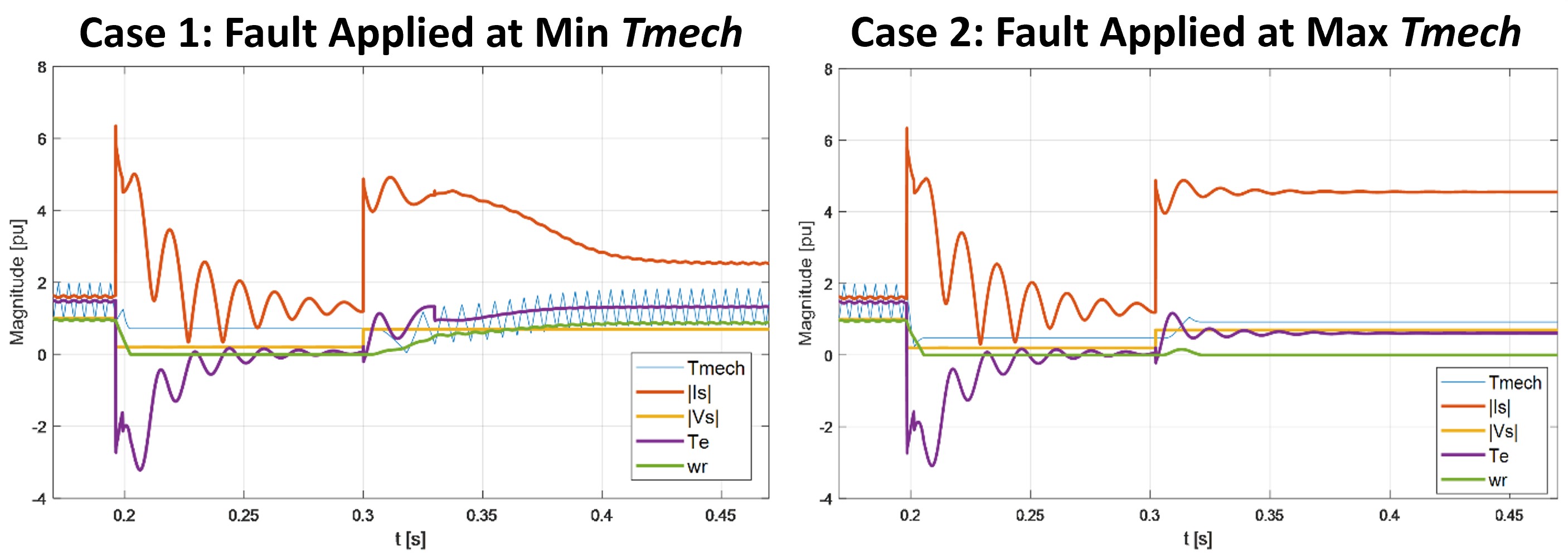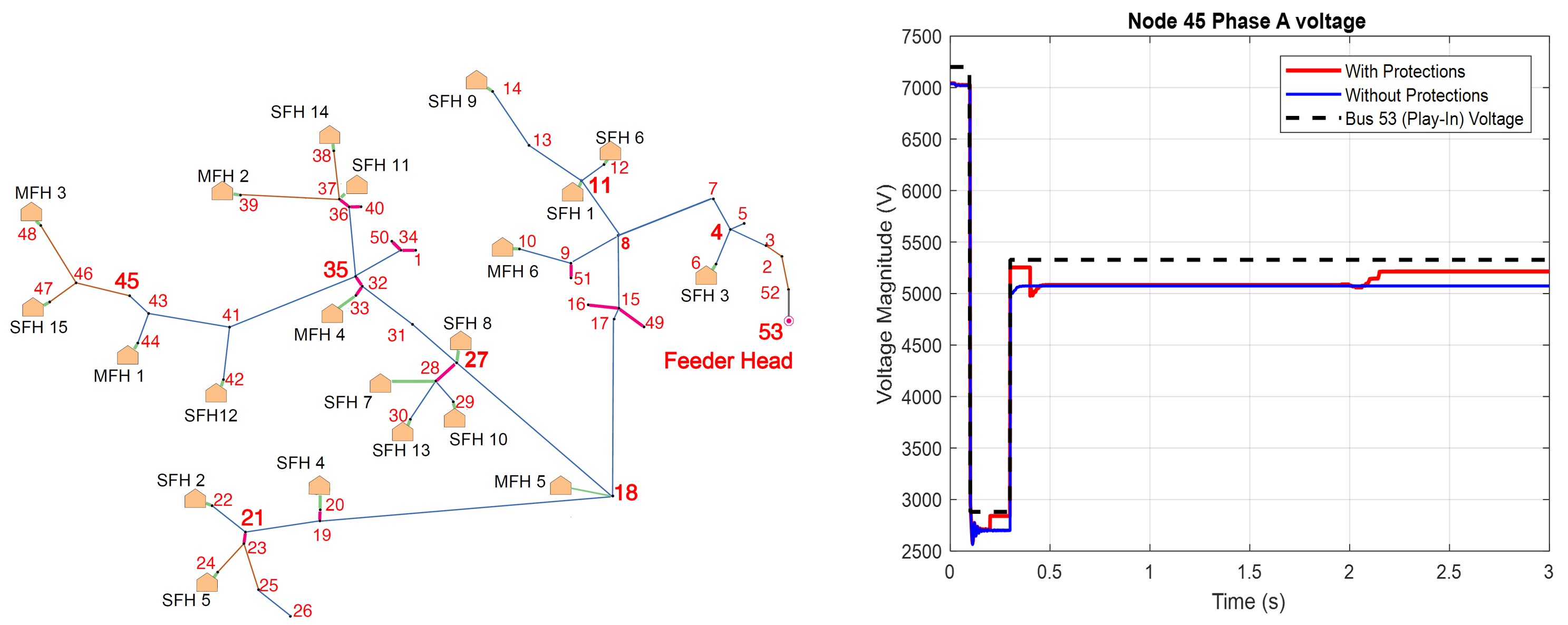Technical Approaches and Results
The PNNL team developed methodologies to update the residential load composition data in the load composition model (LCM) using recent data sources. The study utilized the recent load shape results from the residential building stock assessment (RBSA) study sponsored by the Northwest Energy Efficiency Alliance (NEEA). The Western Electricity Coordinating Council (WECC) interconnection system includes a total of 12 climate zones. The NEEA RBSA study was only conducted in the Pacific Northwest regions, consisting of four typical climate zones. For the other eight WECC climate zones, up-to-date residential load shape data were unavailable and needed to be derived using existing data sources.
The PNNL team proposed an innovative cross-correlation-based methodology to use the latest NEEA RBSA data to estimate load shapes for the other eight WECC climate zones by analyzing the correlations of power consumption patterns between the four Northwest climate zones and the other eight climate zones. Figure 2 illustrates the data requirements of load composition and the flow chart showing the steps to update the residential design data. Figure 3 shows the comparison of cooling load shapes in the old and updated LCM database.
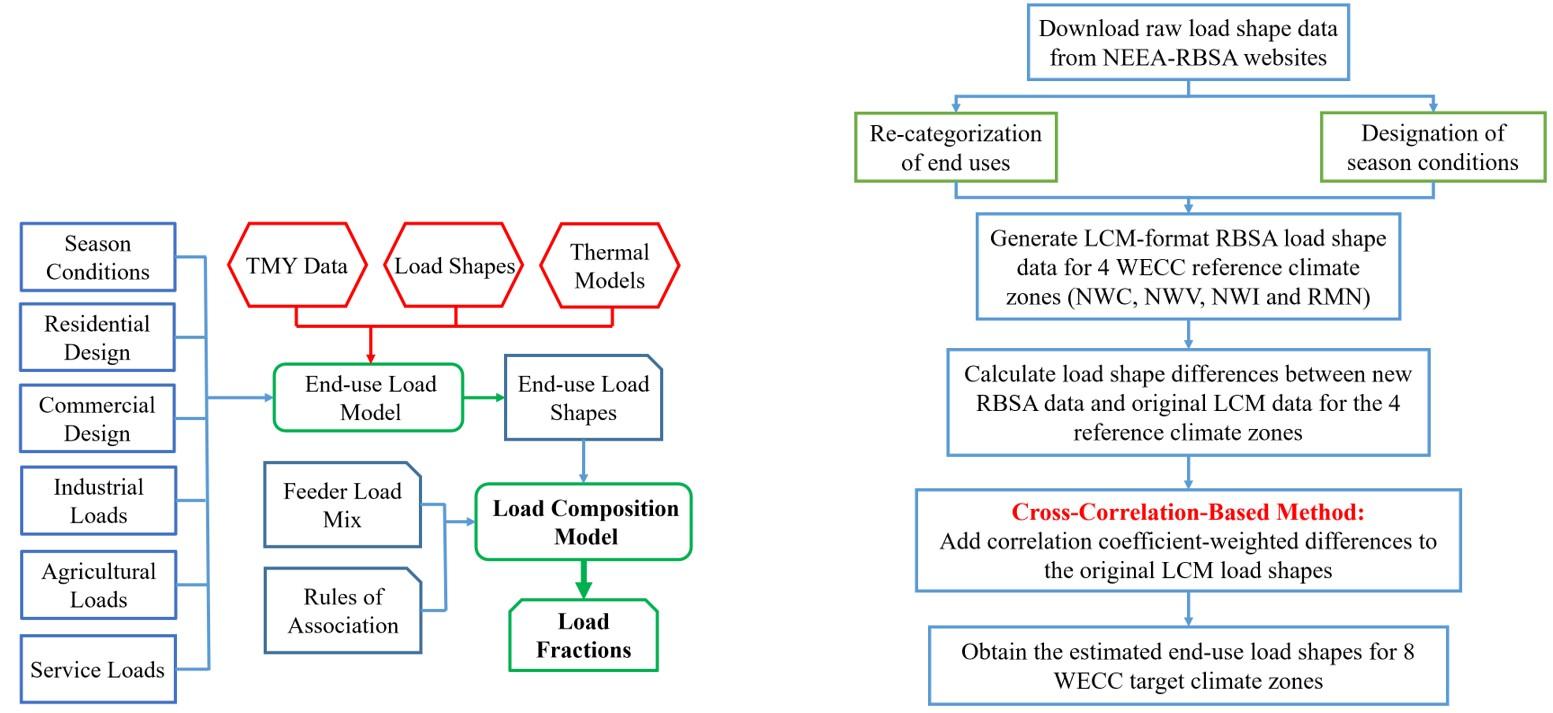
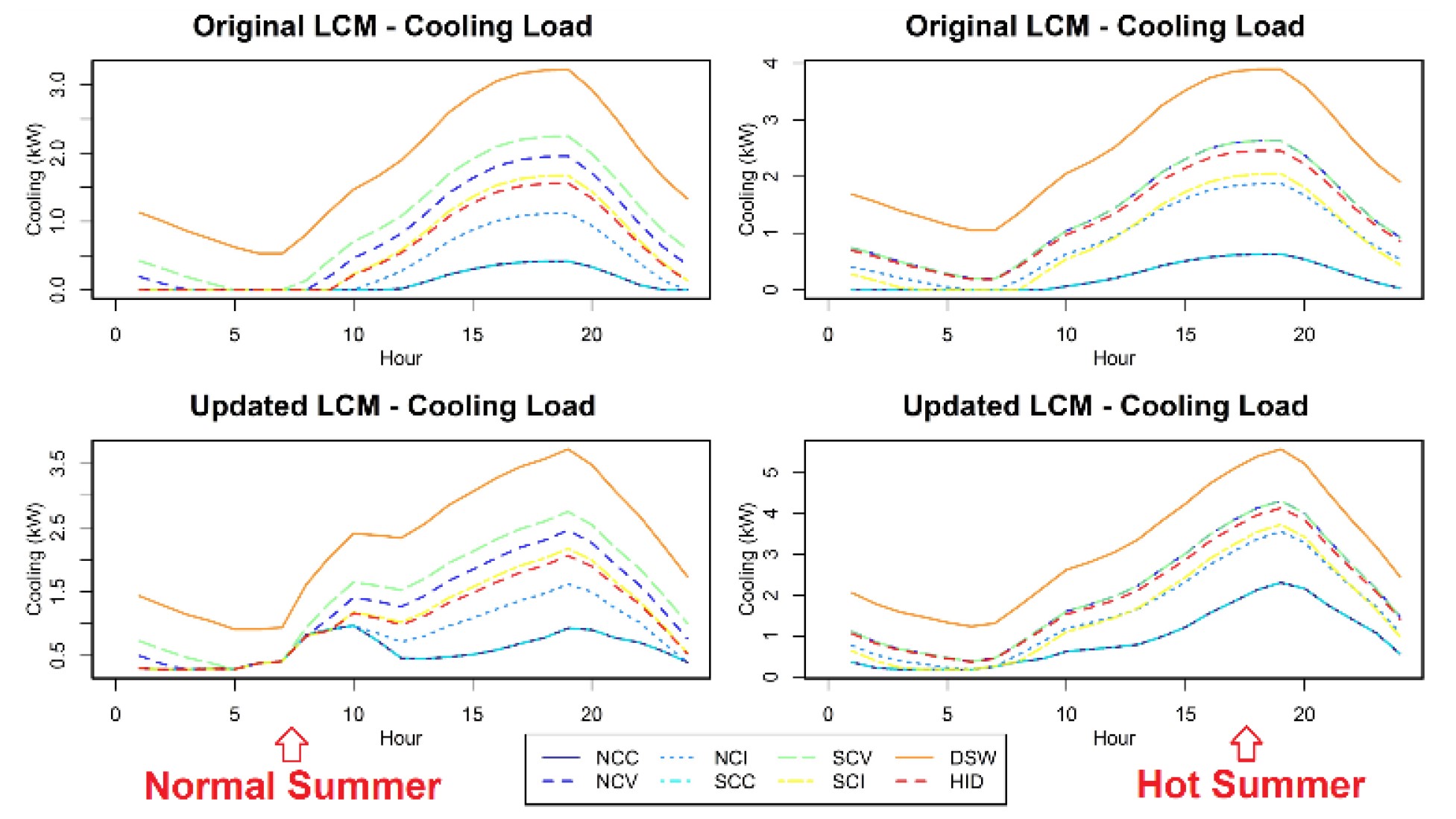
The PNNL team also proposed a methodology to generate composite protection profiles for commercial building motor loads. The team combined knowledge of various protection schemes available in various end-use appliances, with the commercial buildings survey data from U.S. Energy Information Administration and typical end-use profiles generated using EnergyPlusTM, to generate composite load protection profiles for the four motor types (Motor A-D) at one-hour intervals over a year for different commercial buildings in representative cities from different climate zones. Figure 4 shows how the protection profiles are aggregated. Table 1 demonstrates the composite protection profiles for the commercial building in January in Phoenix, AZ.

Table 1. Composite protection profiles for the commercial building in January in Phoenix, AZ. (P1: electronic relay, P2: current overload relay, P3: thermal protection, P4: contactor, P5: building management system)
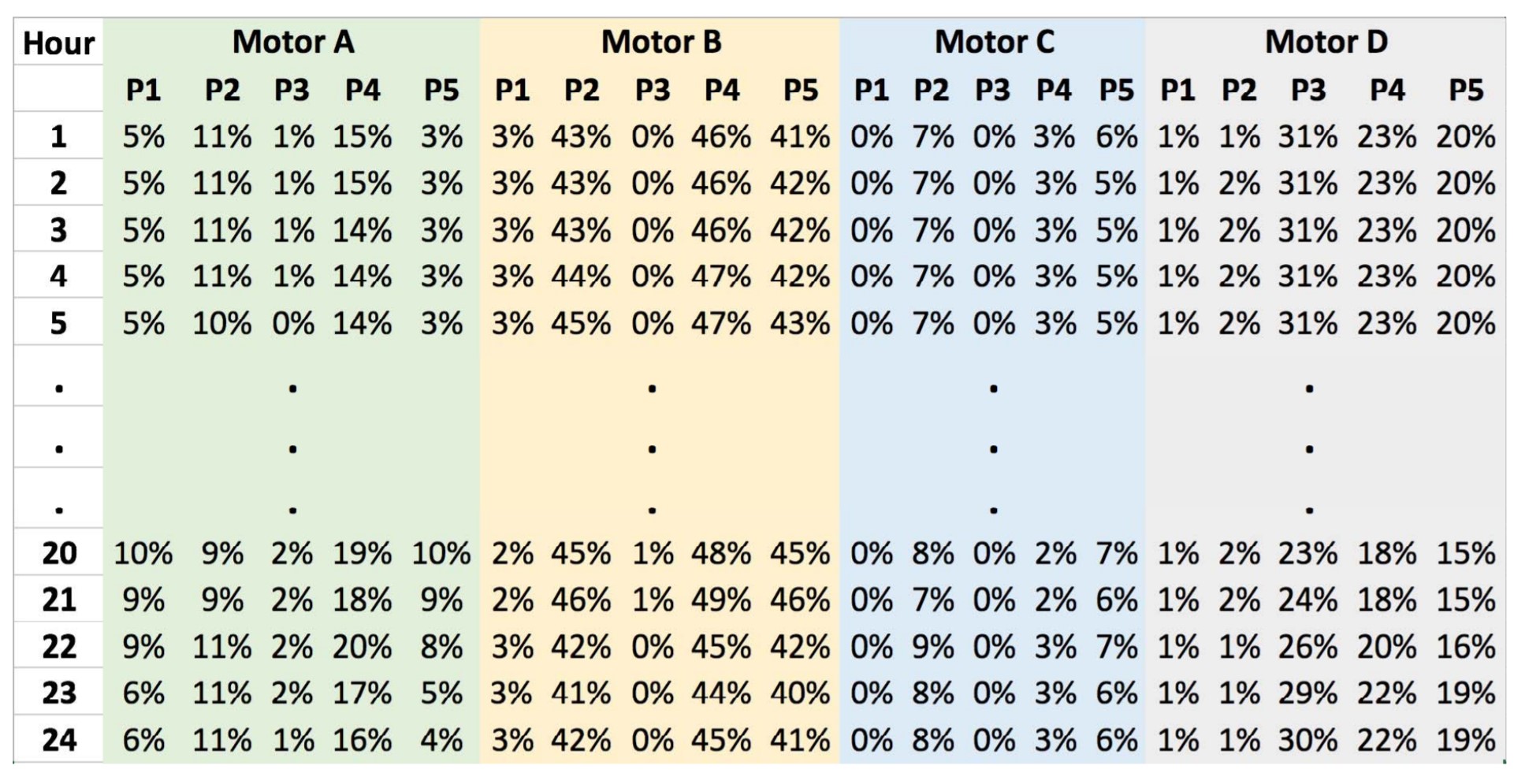
The PNNL team developed a Load Model Data Tool (LMDT) in cooperation with Bonneville Power Administration (BPA) and WECC modeling and validation working group (MVWG). The LMDT is a standalone open source Windows application that generates composite load model parameters taking into account climate zone and seasonal information, operating hour and feeder type. The LMDT uses base case power flow conditions and supplemental load shape data to generate the dynamics records in GE PSLF and Siemens PTI PSS®E format. Figure 5 shows a snapshot of the main window of this tool.
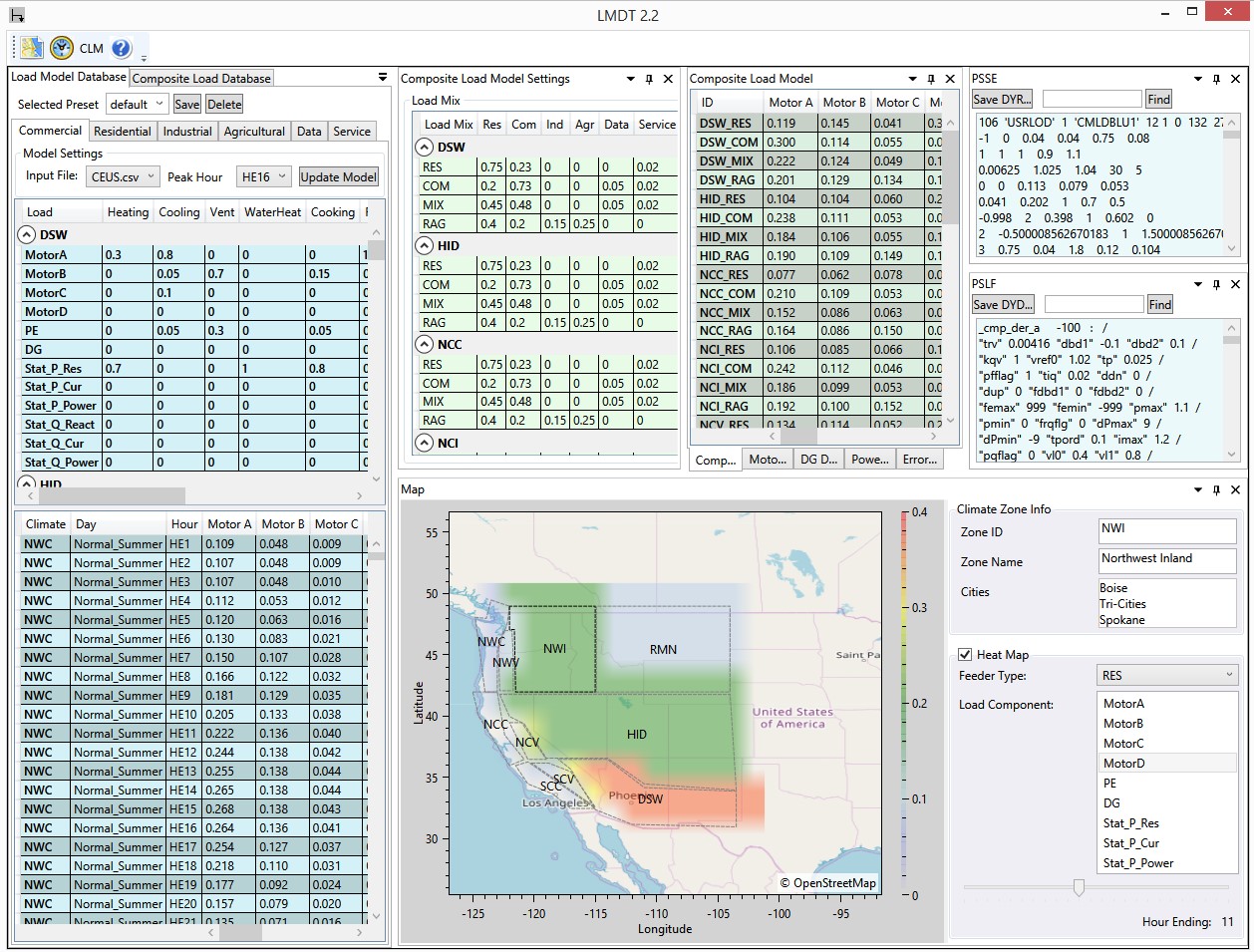
The PNNL team also developed a testbed feeder model serving as surrogate for the real system to extract testing data for model validation purposes. PNNL implemented the modeling of residential end-use motor loads equipped with dedicated protection devices in GridLAB-D. Common types of mechanical torque were also implemented for different functional motors in typical single-family and multi-family homes.
Additionally, the PNNL team modeled a representative residential feeder model in GridLAB-D. Voltage depressions were imposed at the head of the feeder supplying multiple residential homes to investigate the behaviors of A/C compressor stalling, actions of motor tripping and reconnection, and system-level responses to motor stalling and motor protection. The research results show that whether an air-conditioner compressor could recover from stalling status depends on the timing of the fault contingency. The contactor and thermal protections, if properly coordinated, can help to reduce the fault induced delayed voltage recovery (FIDVR) problem by tripping stalled motors. Figure 6 and 7 show the results of this study.
